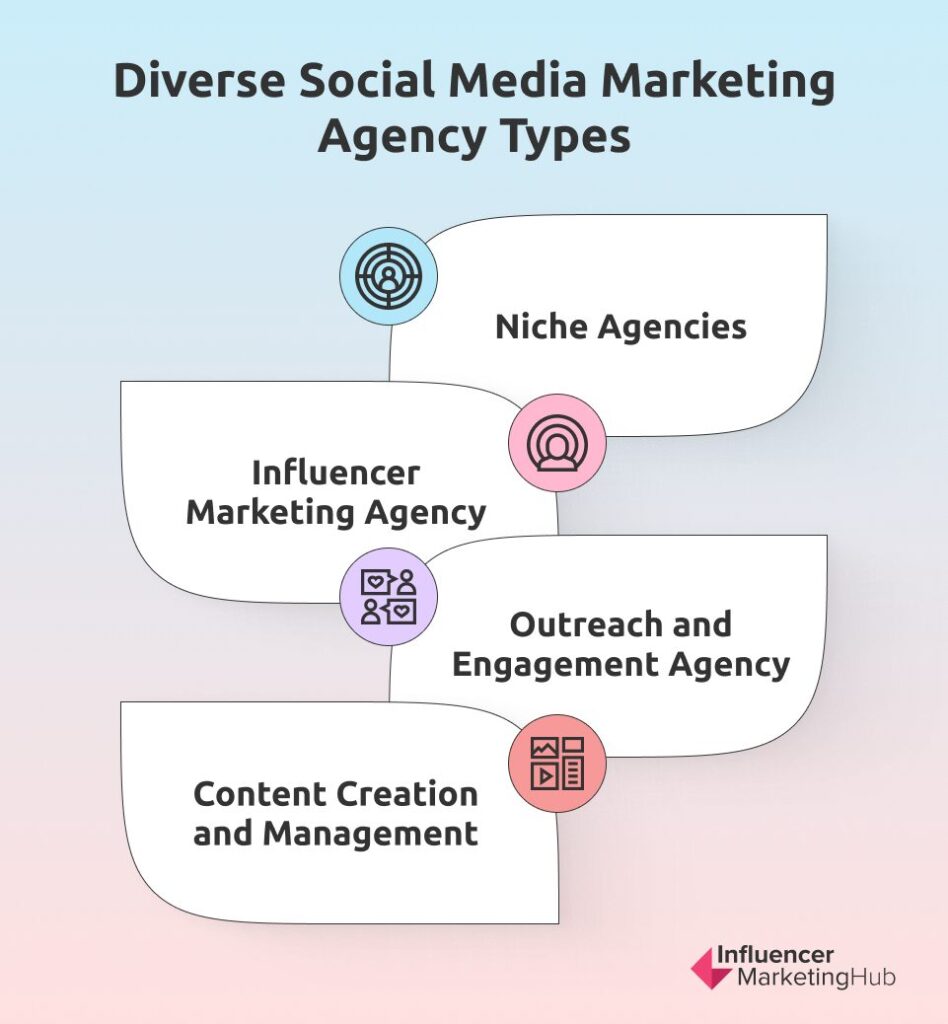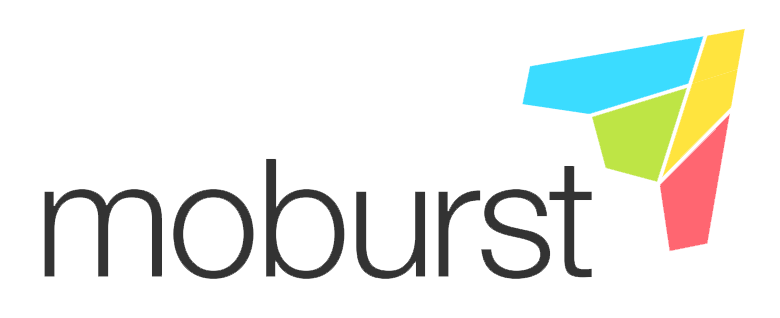Top Social Media Management Services
Establishing a social media presence is non-negotiable for businesses today. To thrive in this digital world, they must redefine their online presence and leave an indelible mark on social media. In this comprehensive guide, we go through the top social media management services and get inspiration from success stories that propelled brands in social channels.
Top Social Media Management Services
Founded in 2011, with headquarters in Utah. Channels: TikTok, Instagram, Facebook, LinkedIn, X (Twitter), Pinterest, Snapchat Industries: eCommerce, Business services, Education, Legal Over the years, Disruptive has positioned itself as a long-term partner for brand growth for non-profits, eCommerce businesses, and other industries. It currently manages over $450M in annual ad spend for almost 100 long-time clients. These enduring relationships prove that their proactive and strategic approach to marketing consistently achieves client satisfaction. Disruptive aligns every campaign to a brand’s vision. To make sure every campaign is designed and executed flawlessly, they limit their client count and focus on growing alongside these brands. While their specialization is PPC, they’re also adept at social media marketing, email marketing, and search engine optimization. Disrupting trends, Disruptive raised an average revenue of $1.4 million for KPMG Spark after implementing a paid media strategy on LinkedIn and Facebook. Doubling the average ROI for this brand, this success exemplifies the capabilities of Disruptive in delivering substantial outcomes. Additionally, Disruptive Advertising holds the distinction of being a Facebook Marketing Partner and a HubSpot Certified Partner. Their industry recognition is further underscored by the receipt of 10+ PPC Management National Awards, solidifying their position as a leading force in the social media landscape. Founded in 2011, with headquarters in Georgia, Alabama, and Texas. Channels: TikTok, Instagram, Facebook, LinkedIn, X (Twitter), YouTube Industries: Advertising, Content Marketing, Creative Agency, Digital Marketing, Social Media, Social Media Advertising, Social Media Management, Social Media Marketing Sociallyin is an agency with an exclusive focus on social dynamics. Their passion for creativity knows no bounds and they eagerly welcome challenges that fuel their drive for growth. They cater to B2B and B2C industries, including retail, travel, IT, medical, lifestyle, automotive, construction, communication, and many more. An idea hub and an in-house production center, Sociallyin is an all-encompassing solution for your social media needs. After defining your brand voice, Sociallyin creates scroll-stopping content that speaks your tone, captures attention, and initiates engagement. It’s among the first agencies to offer AR content creation that enables brands to offer immersive experiences to their target audience. To ensure their strategies deliver tangible results, they adopt a data-driven approach that includes social monitoring, ROI modeling, and data analysis. Real-time tracking through reporting dashboards offers transparency into the impact of their campaigns. Founded in 2014, with headquarters in Illinois. Channels: Facebook, Instagram, LinkedIn, Pinterest, TikTok, X (Twitter), YouTube Industries: Manufacturing, Automotive, Retail, Non-profit Fresh Content Society focuses on social media management and complements this with digital strategy and video production services. They’re dedicated to helping brands, both local and international, build organic communities in various social media platforms. Committed to providing the needs of businesses from different niches, they strive to gain a deep-level understanding of their clients’ industries and a fresh perspective of their markets. This allows them to develop customized strategies that make each brand stand out among the competition. To align campaigns with business goals, Fresh Content Society follows a meticulous process that includes identifying gaps in current marketing tactics, customizing new strategies, and maximizing online visibility. They continuously update their knowledge in technology, social platforms, and the ever-changing audience landscape. Fresh Content Society’s track record showcases its ability to deliver results across various platforms and industries. They garnered over one million views in just seven days from a YouTube campaign for KFC. They also delivered a 20x ROAS on Facebook for Bath Planet within just 90 days. Employing a multichannel approach, they achieved a 6,000% increase in engagement for True Value. Founded in 2011, with headquarters in Atlanta, Georgia. Channels: Facebook, Instagram, X (Twitter), LinkedIn Industries: Advertising, Marketing Focusing on three major social media platforms, Lyfe Marketing designs and implements a targeted and effective strategy for each client. Each client gets a dedicated social media account manager who oversees all aspects of the campaign, maintains efficient collaboration, and keeps the client in the loop. This collaboration is the cornerstone for developing and executing a strategy that includes thorough research, competitive analysis, and content creation. Ensuring transparency and accessibility, Lyfe Marketing provides monthly reports to clients and conducts regular meetings. Their user-friendly platform allows clients to track the real-time progress of campaigns 24/7. Their ability to keep pace with the ever-changing social media algorithms allows them to not just meet but exceed client expectations. While known for its social media prowess, Lyfe Marketing goes beyond and is a full-service agency. In addition to social media marketing services, they offer a suite of digital marketing services, including PPC, email marketing, and advertising. Founded in 2013, with headquarters in New York, San Francisco, Tel Aviv, and London. Channels: Blog, Facebook, Google Ads, Instagram, LinkedIn, Pinterest, Snapchat, TikTok, X (Twitter), YouTube, YouTube Advertising Industries: Arts, entertainment & music, Consumer products & services, Media, Supply Chain, Logistics, and Transport, eCommerce, Financial services, Gaming, Retail, Telecommunications, Medical Moburst is an agency with a distinct focus on mobile and app marketing, complemented by a well-rounded suite of services for social media marketing. They tailor their approach to balance both organic and paid social media on multiple platforms. At the core of Moburst’s strategy is a commitment to performance-driven results. They customize content strategies for each platform, from creating compelling posts to engaging videos. Their versatility in content creation makes sure that a brand’s message is communicated effectively across various mediums. Through constant tracking and monthly assessments, they strengthen what works and change what doesn’t to consistently meet evolving goals. The successful global launch of Redefine Meat in four European cities, the 87% decrease in cost per install for ShopKick, and the remarkable 1,400% growth from downloads to social for Samsung’s Galaxy App Store are just among the success stories that show how Moburst can be an agile partner for businesses of all sizes and industries. Founded in 2012, with headquarters in Iowa. Channels: LinkedIn, Facebook, X (Twitter), YouTube, Instagram Industries: Information technology, Business services, Manufacturing, Education, Energy & natural resources, Media Sculpt is an agency exclusively dedicated to elevating B2B social media programs for leading brands. Their mission is clear—to help B2B brands generate demand, increase share-of-voice, and outpace competitors through social media. They cater mostly to mid-market challengers and enterprise tech giants from different sectors, including SaaS, FinTech, manufacturing, industry media, B2B e-commerce, professional services, and industrial automation. Sculpt shapes success with a mix of organic and paid social media strategies. Their process begins with an opportunity assessment, where they spot gaps and identify opportunities within the current social media strategy. Insights gleaned from this assessment drive the development of a new strategy. Hands-on with their approach, they actively support the implementation of the strategy. This may include tasks such as content creation, community management, and influencer campaign management. Among their successes are an astounding 10,600% increase in Facebook engagement for the Goodwill Brand Awareness Campaign and the successful brand launch of real estate firm Urban Acres across four major channels. With their coordinated campaign, the firm’s social media accounted for one-third of all click-throughs to its website. Founded in 2002 with headquarters in London, United Kingdom. Channels: Discord, Facebook, Flickr, Google, Instagram, Line, LinkedIn, Pinterest, Quora, Reddit, SlideShare, Threads, TikTok, TripAdvisor, Tumblr, Twitch, Twitter, WeChat, Yelp Industries: Aviation, Technology, Retail, Entertainment ICUC.Social positions itself as a pioneering social media management agency, dedicated to fostering and protecting online communities for brands across the globe. With a portfolio boasting partnerships with over 250 global brands, including industry leaders like Air Canada, Google, Macy’s, and Sony, ICUC has cemented its reputation as a trusted partner in brand-aligned community interaction. Their comprehensive approach extends beyond mere management to strategic development and execution of social media initiatives, ensuring brand consistency and engagement across all platforms. Understanding the dynamic nature of social media, ICUC employs a global team of community managers who integrate seamlessly with your brand, embodying your ethos to build, scale, and engage online communities authentically. Their services are tailored to operate 24/7, providing coverage in any language and across all channels, ensuring no customer interaction goes unnoticed. ICUC’s crisis management services stand out, offering immediate, strategic responses to protect and preserve your brand’s reputation in the face of potential crises. Their proactive approach to crisis moments, backed by international moderation services, ensures you are never left unprepared, safeguarding your image, voice, and legacy around the clock. Founded in 2005, with headquarters in Texas and offices in 25+ cities. Channels: Blog, Facebook, Instagram, LinkedIn, Pinterest, X (Twitter), YouTube Industries: Business services, Consumer products & services, Education, Financial services, Legal, Manufacturing Thrive is a full-service agency that integrates social media marketing with other digital marketing strategies, including link building, PPC, and email marketing. With its experience in both B2C and B2B industries, it is able to help businesses of all sizes take root and grow in their industries. Thrive employs a holistic approach to social media management. A team of paid and organic strategists work together to create a cohesive strategy for unifying brand channels and fostering online communities. A dedicated account manager oversees each campaign and facilitates smooth collaboration. Analytics and data-tracking tools provide insights that drive informed decision-making. This comprehensive approach ensures that your brand is visible and impactful across all online channels. Founded in 2018, with headquarters in Los Angeles. Channels: LinkedIn, Blog, Google Ads Industries: Advertising & marketing, Business services, Financial services, Information technology, Real estate Cleverly specializes in lead generation for B2B companies. It focuses mainly on LinkedIn for generating leads and closing deals but amplifies this with SEO content and Google Ads. This focus on one social media platform allows it to amplify the online presence of B2B companies where it matters most. The Cleverly approach involves building targeted lists of ideal prospects and sending cold outreach messages to engage with potential clients. They also craft and send custom messages to qualified leads every month to maintain engagement. Cleverly is not just a lead generation agency. They also offer a comprehensive suite of services, including content creation, advertising, recruiting, and a white-label service. This diverse set of offerings shows their versatility in meeting various business needs. Founded in 2006, with headquarters in Denver, Colorado. Channels: Facebook, Instagram, LinkedIn Industries: Business services, Consumer products & services, eCommerce, Hospitality & leisure, Manufacturing, Medical, Retail Volume Nine is a talented team of graphic designers and social media specialists dedicated to boosting the online presence and social following of brands from various niches. For every client, Volume Nine assigns a seasoned director who leads a dedicated team of experts, and is without a doubt a one of the leading digital marketing agencies in Denver. Unlike other agencies that offer structured marketing services, they tailor their offerings to suit a brand’s unique needs. This adaptability makes sure that the right tactics are used and the objectives are successfully met. For content creation, Volume Nine uses a diverse mix of videos, static images, custom graphics, and illustrations. This not only keeps their clients’ social media feeds visually engaging but also allows them to keep up with the changing dynamics in social media. But Volume Nine is not just about creativity; they are also data-driven, results-oriented, and strategically aligned. The effectiveness of Volume Nine campaigns can be heard loudly across industries. They achieved a 135% increase in social conversions and added over 44,000 new Facebook followers for Vitamin World in just four months. For TUUCI, an outdoor shade company, they delivered a gain of 50.24% more organic traffic. Through the #glointheknow campaign, they increased social referrals by 67% for the mineral makeup brand GloPro. Founded in 2012, with headquarters in San Diego, California, New York, and Washington DC. Channels: Facebook, Instagram, X (Twitter), Pinterest, LinkedIn Industries: Advertising & marketing, Business services, Consumer products & services, Retail, eCommerce Power Digital Marketing is known for its innovative approach, fearless yet calculated risk-taking, and commitment to empowering brands to dominate their niches. They set themselves apart by embracing change and going beyond the necessary while injecting an element of fun into their work. Their boldness in defying norms leads to unimaginable results that pave the way for brand growth. One of Power Digital Marketing’s key strengths is cultivating an authentic social media presence. Their approach aims not just to acquire customers but to win them for life. Their process is thorough and strategic from a highly detailed audit to a well-planned content calendar. They diligently track metrics and monitor interactions to ensure the effectiveness of their strategies. Power Digital Marketing caters to a diverse range of industries, including consumer products and services, retail, B2B, and private equity. TomboyX saw a 175% increase in page one search rankings. Victrola reached almost 900,000 users organically in just 12 months. The Draw Shop reached more than 1 million users in a social video funnel and achieved a 171% increase in organic search conversions.1. Disruptive Advertising

Services:
Pros:
Cons:
2. Sociallyin

Services:
Pros:
Cons:
3. Fresh Content Society

Services:
Pros:
Cons:
4. Lyfe Marketing

Services:
Pros:
Cons:
5. Moburst

Services:
Pros:
Cons:
6. Sculpt

Services:
Pros:
Cons:
7. ICUC.Social

Services:
Pros:
Cons:
8. Thrive Internet Marketing Agency

Services:
Pros:
Cons:
9. Cleverly

Services:
Pros:
Cons:
10. Volume Nine

Services:
Pros:
Cons:
11. Power Digital Marketing

Services:
Pros:
Cons:
What Qualifies as a Leading Social Media Management Agency
The social media management market is projected to reach $134.07 billion in 2032—a significant growth from just $23.50 billion in 2023. To meet the increased demand for these services, we’ll likely see a proliferation of social media management agencies. However, not all of them would be worth partnering with.
Leading the pack would be agencies that distinguish themselves with strong company values, a commitment to propelling client success, the ability to stay at the forefront of social trends, and the capability to harness the latest tech tools. Other key attributes that differentiate leading social media management agencies are:
- Proven track record of tangible and measurable results
- Agile adaptability in navigating sudden shifts in social media dynamics
- Cutting-edge technology, including analytics and automation tools
- An expert team of professionals with a wealth of knowledge and experience
Simply put, what qualifies as a leading social media management agency is a holistic approach anchored in values, adaptability, technological prowess, and a proven ability to drive measurable success for their clients.
Different Types of Social Media Marketing Agencies
Social media marketing agencies come in various types, each with a specific focus that allows them to excel in certain areas and deliver better results.

Niche Agencies
Some agencies specialize in a particular platform or industry, honing their expertise for targeted impact. For instance, there are Instagram-focused agencies that cater specifically to the travel industry, eCommerce, or retail. Similarly, LinkedIn-focused agencies like Cleverly tailor their strategies for B2B markets and industrial sectors.
Influencer Marketing Agency
These agencies are experts in vetting and curating top influencers across social media platforms. Their role is to pair brands with the right influencers—those whose followers align with the brand's target market. An example is Fresh Content Society, which specializes in ROI-focused social media influencer campaigns and collaborates with influencer talents.
Outreach and Engagement Agency
Agencies specializing in outreach and engagement primarily focus on organic strategies within social media marketing. Their goal is to build new relationships, enhance brand awareness, and grow online followings. Lyfe Marketing is an example of an agency excelling in developing prospect lists, crafting messaging strategies, and increasing followers, likes, and comments.
Content Creation and Management
These agencies are dedicated to creating and managing content, including copy, visuals, videos, and more, optimized for various social media platforms. They often utilize automation tools for content scheduling and posting, along with content library templates to ensure consistency and efficiency in content delivery. Social Media Scheduling Tools are integral for managing content distribution effectively. SociallyIn is one of the leading agencies that have a robust content creation suite.
Understanding the different types of social media marketing agencies allows businesses to choose a partner that aligns with their specific needs, whether it's platform-focused, influencer-driven, engagement-centric, or content-oriented.
Case Studies: Success Stories of Businesses Leveraging SMM Services
Here are a few compelling case studies that showcase the transformative impact of strategic social media management.
Samsung + Sociallyin
Samsung, a global giant, partnered with Sociallyin to rejuvenate its B2B content strategy. Facing challenges like an unengaged community and outdated content, the collaboration focused on a tweet campaign, community management, and compelling graphics and videos. The results were impressive—53K+ engagements, 2.2M+ impressions, 24.7K+ clicks, and a significant 2.48% increase in engagement rate. After executing an evergreen content plan across 12 different verticals, including LinkedIn profile management for executives, the profiles are now active, and the community is thriving.
True Value + Fresh Content Society
When True Value lost its PR agency to a competitor, it sought a new marketing partner with a fresh perspective on its market. Fresh Content Society stepped in and delivered a 6,000% increase in engagement, a 500% increase in audience size, and a substantial 200% boost in website traffic. Their strategy included analyzing the brand's social media strategy and implementing a campaign to drive audience growth, engagement, and sales.
LeaseLock + Cleverly
As a young startup entering the market, LeaseLock faced the challenge of building brand recognition and gaining the trust of prospects. Aiming to connect LeaseLock with decision-makers and influencers in their target market, Cleverly focused on enriching engagement on LinkedIn. Through organic brand building and targeted outreach campaigns, Cleverly’s efforts generated 386 leads and led to $1 million in revenue within a 12-month period.
These case studies exemplify how businesses, big and small, can leverage SMM services to overcome challenges, engage their audience, and achieve significant growth in the competitive digital landscape.
Invest in Professional Social Media Marketing Services
Consistency, active audience engagement, the strategic use of visuals and multimedia, staying updated on trends, and monitoring and adapting based on performance metrics are key strategies for success. These practices not only enhance brand visibility but also create a dynamic and responsive digital presence. Investing in professional social media marketing services enables you to put these practices in place.
The benefits of such an investment are manifold. Professional services offer time and resource efficiency, freeing you to focus on core activities. The expertise and experience brought by seasoned professionals ensure strategic and impactful campaigns. The result is a consistent and positive brand image, heightened engagement with the audience, and improved conversion rates.
By embracing these best practices and reaping the benefits of social media marketing agencies, you can maximize your impact on social media and sustain growth or relevance online.
Frequently Asked Questions
How do I find the best social media agency?
To find the best social media agency, conduct a thorough research by exploring reputable sites like Influencer Marketing Hub, Clutch, and G2, where you can find lists of top agencies. Pay attention to reviews, particularly from clients in your industry, to gauge their niche expertise. Create a shortlist based on your findings, and then schedule consultations to assess cultural fit and budget alignment. This approach ensures you make an informed decision tailored to your specific needs and goals.
What are the top 4 social media services?
The top four social media services include social media strategy development, content creation and management, community engagement, and analytics and reporting for performance insights. Influencer marketing services and social advertising services are also becoming increasingly popular.
How much does a social media marketing agency cost?
Costs for social media marketing agencies vary. Freelancers may charge hourly rates ranging from $50 to $200, while agencies may offer more comprehensive services for monthly subscriptions of $1,000 to $25,000 per month. Some may charge project-based fees or a percentage of ad spend around 10-20%.












